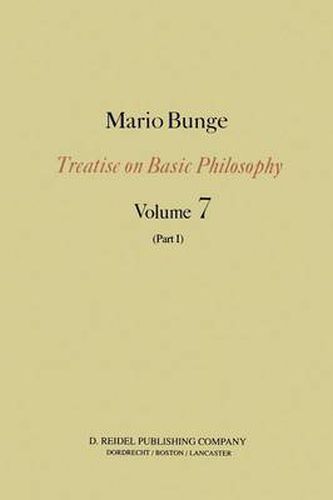Readings Newsletter
Become a Readings Member to make your shopping experience even easier.
Sign in or sign up for free!
You’re not far away from qualifying for FREE standard shipping within Australia
You’ve qualified for FREE standard shipping within Australia
The cart is loading…






This title is printed to order. This book may have been self-published. If so, we cannot guarantee the quality of the content. In the main most books will have gone through the editing process however some may not. We therefore suggest that you be aware of this before ordering this book. If in doubt check either the author or publisher’s details as we are unable to accept any returns unless they are faulty. Please contact us if you have any questions.
The aims of this Introduction are to characterize the philosophy of science and technology, henceforth PS & T, to locate it on the map ofiearning, and to propose criteria for evaluating work in this field. 1. THE CHASM BETWEEN S & T AND THE HUMANITIES It has become commonplace to note that contemporary culture is split into two unrelated fields: science and the rest, to deplore this split - and to do is some truth in the two cultures thesis, and even nothing about it. There greater truth in the statement that there are literally thousands of fields of knowledge, each of them cultivated by specialists who are in most cases indifferent to what happens in the other fields. But it is equally true that all fields of knowledge are united, though in some cases by weak links, forming the system of human knowledge. Because of these links, what advances, remains stagnant, or declines, is the entire system of S & T. Throughout this book we shall distinguish the main fields of scientific and technological knowledge while at the same time noting the links that unite them.
$9.00 standard shipping within Australia
FREE standard shipping within Australia for orders over $100.00
Express & International shipping calculated at checkout
This title is printed to order. This book may have been self-published. If so, we cannot guarantee the quality of the content. In the main most books will have gone through the editing process however some may not. We therefore suggest that you be aware of this before ordering this book. If in doubt check either the author or publisher’s details as we are unable to accept any returns unless they are faulty. Please contact us if you have any questions.
The aims of this Introduction are to characterize the philosophy of science and technology, henceforth PS & T, to locate it on the map ofiearning, and to propose criteria for evaluating work in this field. 1. THE CHASM BETWEEN S & T AND THE HUMANITIES It has become commonplace to note that contemporary culture is split into two unrelated fields: science and the rest, to deplore this split - and to do is some truth in the two cultures thesis, and even nothing about it. There greater truth in the statement that there are literally thousands of fields of knowledge, each of them cultivated by specialists who are in most cases indifferent to what happens in the other fields. But it is equally true that all fields of knowledge are united, though in some cases by weak links, forming the system of human knowledge. Because of these links, what advances, remains stagnant, or declines, is the entire system of S & T. Throughout this book we shall distinguish the main fields of scientific and technological knowledge while at the same time noting the links that unite them.